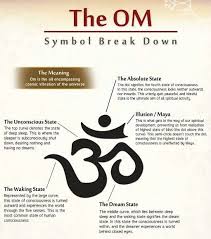
Yoga philosophy is founded on three core principles: meditation, asana practice, joy, and mindfulness. These practices are designed to condition an aspirant's body. The asanas are considered "mastery" if they can be held for an extended period. There are four types, including Primary, Intermediate and Advanced. To be successful in each asana, you need to have a certain level of mental concentration. The primary goal is to stabilize the breath and detach from any unnecessary distractions.
Yoga has many stages. The first five stages are external aids. The mental aids are used in the last three stages. Dharana means the ability to remain conscious of the externals over a long period of time. Dhyana is the unabated contemplation and concentration on the object of meditation, without the need to think about the ego. The ultimate goal in all yoga practices is samadhi. This refers to total self-collectedness. The meditation can lead to this state through connecting to the cosmic Intelligence.
Yoga's intellectual content is made up of principles of Samkhya which are the Hindu school and philosophy. It presumes that there is a Supreme Being. This is how the aspirant can attain complete spiritual freedom. The aspirant should be free of all illusions, ignorance, and material, because they can only bring him down. The aspirant attempts dephenomenalization to reverse the current order of things and achieve purity.

Westerners may struggle to understand the core principles and concepts of yoga philosophy. However, the core concepts are helpful in reorienting the mind and experiencing the interconnection of all things. Yoga practice can include many aspects such as the chakras (nadis), and a spiritual "chi" (sensuality). Hatha yoga is particularly grounded in the study of energy anatomy, which is an important part of yoga practice.
For those who want to practice yoga seriously, the philosophy of yoga is essential. It is about preparing the body and mind to practice yoga. Yoga Sutras' first two stages are focused on ethical preparations. The yama, niyama and final stages of yoga are the first. The niyama chapters are concerned with discipline and abstinence. The niyama sections focus more on the mind.
The aphorisms of the Yoga Sutra, or "Threads of Wisdom," describe the eight limbs of yoga. These aphorisms are a guideline for a fulfilling life. The Sutra not only discusses the eight limbs and aspects of yoga but also the diverse aspects of meditation. It emphasizes the importance of meditation and mindfulness. It allows people to realize their full potential. It is a great way to avoid suffering.
In addition to asanas, Yoga philosophy also stresses the importance of achieving moksha. In yoga practice, the aphorisms play a significant role. The yoga practice includes the asanas. Asanas can be used to help achieve moksha. But it is also important to understand the philosophical roots of the practice. The yogic texts are a great place to start. Yoga practice should include the principles of the aphorisms.

One of the most important concepts of yoga philosophy is self-realization. This can be achieved through the practice the "Yoga-sutras", also known to as the Yoga Sutras. The sutras offer many practices and principles to self-realization. In addition to asanas, the Yoga-sutras are the main texts of yoga. The practitioner should focus on the breath during the Asanas.
Yoga is about the continuous experience of pure awareness. This is also called Samadhi, or Moksha. The yoga practitioner will experience the realization of his or her "true self". The mind, body and mental constructs are all gone and all that is left is the present moment. The yoga philosophy can help you achieve this enlightened state. It is an integral part the practice.
Although asanas are crucial for practicing yoga, there are also many other benefits. These practices can help you relax and improve your energy level. They can also help improve the immune systems, which are vital parts of the human body. Before performing asanas, it is crucial to understand yoga philosophy and its benefits. The EkhartYoga Academy offers a course titled The Yoga Sutras of Patanjali.
FAQ
Which is the best order to exercise?
It all depends on your goals. To build muscle mass, you should first lift heavy weights. Next, you can move onto cardio. For those who want to lose weight or exercise, you can switch from cardio to strength-training.
Cardio can be done if you want to just lose fat. You can then add strength training.
Do cardio first if you are looking to increase muscle mass. It stimulates growth hormones that help build muscle mass.
Also, eat before you workout. This will fuel your muscles, making them work harder. You will feel happier during your workout.
Is it true to say that protein overeating can lead to kidney stones?
Protein helps maintain healthy bone and tissue. Too much protein can cause calcium to be excreted through the urine. This can lead to kidney stones.
Not everyone who eats more than 2g of protein per kilogram (2.2 lbs) of bodyweight will get kidney stones. You don't have to eat a lot of protein to get kidney stones.
Your sodium intake can prevent kidney stone formation. Sodium helps regulate water balance in the kidneys. Too much sodium can cause kidney stones.
You can also try reducing your protein intake if you get kidney stones. The majority of adults need protein for half their daily caloric needs. Reduce your intake of protein and you will likely lose weight.
If you do decide to eat more protein, don't go overboard. Try to eat less than 20% protein in total calories.
What is a good seven-day workout routine?
A seven-day exercise plan should include cardiovascular training (running/biking/swimming), strength exercises (using weight machines, free weights) and one flexibility/core program (yoga or Pilates). It's essential to do each activity at least once a week. Each session should not last more than 45 minutes.
Cardiovascular Exercise: Running/Biking/Swimming
You should aim to get at least 60 mins of cardio exercise per week. You can aim for 75 minutes a week for best results. Cardio exercise can stimulate blood flow and increase muscle growth.
Strength Training
Cardio exercises target the heart, lungs and muscles. Strength training targets the muscles, tendons and bones. Strength training can help you burn calories even when you're not working out.
Flexibility and core workouts
Core and flexibility exercises are great ways of strengthening your whole body. Both yoga and Pilates can be great choices.
Statistics
- Cardmembers earn 5% Back at Amazon.com with a Prime Credit Card. (amazon.com)
- According to the American Academy of Dermatology (AAD), men over 50 are at a heightened risk of developing it. (healthline.com)
- The PRS enabled risk stratification for overall prostate cancer and lethal disease with a four-fold difference between men in the highest and lowest quartiles (HR, 4.32; 95% confidence interval [CI], 3.16-5.89). (pubmed.ncbi.nlm.nih.gov)
- Are You One of the 20% of Guys (mh.co.za)
- An estimated calorie range for moderately active adult males falls between 2,200 to 2,800 calories per day, depending on age. (eatright.org)
External Links
How To
What food is the healthiest for men?
Men should eat five servings per day of fruits and vegetables. Men should also limit their consumption of red meat and avoid fast food.
Vegetables and fruits are rich in antioxidants, which can protect against cancer and cardiovascular disease.
Vegetables include broccoli, cauliflower, carrots, spinach, tomatoes, peppers, cucumbers, lettuce, mushrooms, etc.
Peas and beans are also high in protein and fiber.
Nuts and seeds are excellent sources of omega-3 fatty acids. Omega-3 s are essential for brain function and hormone production.
Fish is another excellent source of omega-3s. Fish has more mercury than other meats. However, fish liver oil does contain fewer toxins.
For normal growth and development, Omega-6s are required in vegetable oils such as soybean, sunflower, safflower and cottonseed oils.
Poultry is a good source of lean protein. Chicken breast is one the healthiest meats.
Lean beef has low levels of cholesterol and saturated fats. However, you should avoid eating too much red meat because too much iron may increase your risk of prostate cancer.
Avoid sausages and hot dogs. These foods contain added nitrates, which can lead to cancer.
It is obvious that exercise is important for overall health. You may already be working out on a regular basis. Is there something you can do to improve your physical condition or keep it that way?
Yes, it is! You have many options to maximize your workouts. These are some ways to make your workouts more enjoyable.
Start slow. Do not push yourself too hard your first session. You could injure yourself. You can start slowly increasing your intensity by starting at a comfortable pace.
Stretch before and afterwards. Stretching can loosen tight muscles as well as reduce soreness and improve flexibility. You can stretch by lying down, standing up, or walking around.
Cool down. This is especially important if you're doing cardio exercises. So that your body doesn't become exhausted, it needs to be able to recover between sessions. To cool down, walk slowly, take deep breaths, or go for a short swim.
Hydrate. Drinking plenty of fluids helps keep you hydrated and reduces muscle cramps. Water is the ideal drink, but sports drinks can also help.
Be healthy. Be sure to eat enough calories each day. You will be more focused and energized if you eat regular meals throughout your day.
Get enough rest. Get enough rest to feel refreshed and ready to tackle your next training session. Sleep is also crucial for repairing damaged tissues.